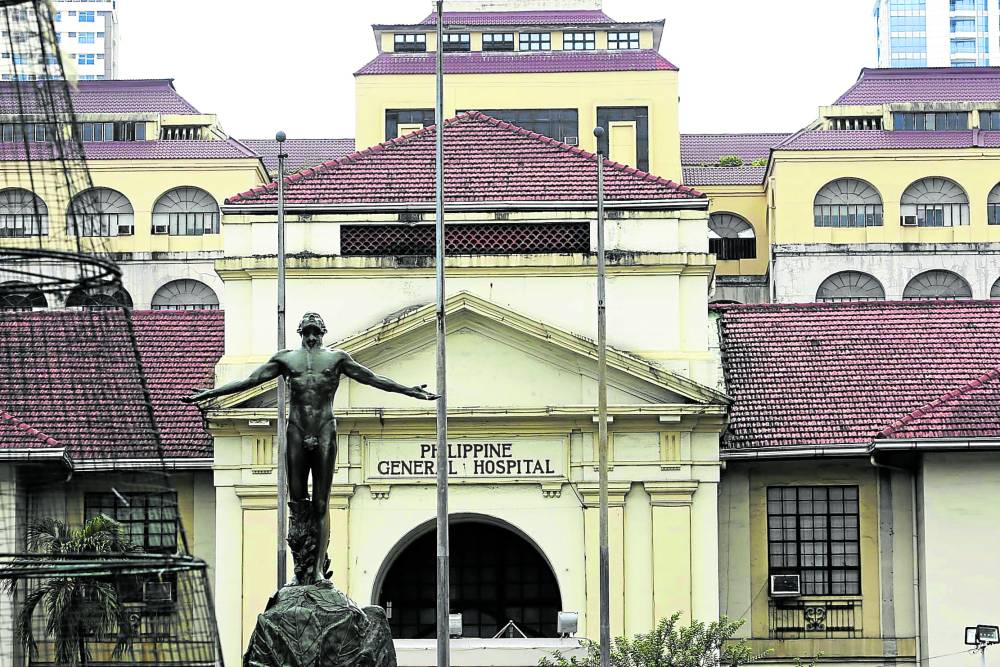PGH braces for influx of cancer patients

SHIFTING GEAR After devoting much of its resources to the pandemic response, the main state-run hospital in Manila is expecting a rise in the number of cancer patients whose treatments were stalled. But it also looks forward to the construction of a new P6-billion cancer center under the Marcos administration. —MARIANNE BERMUDEZ
The Philippine General Hospital (PGH) is “bracing for the worst” in the next two to three years as more cancer patients earlier sidelined by pandemic restrictions finally seek treatment.
According to Dr. Jorge Ignacio, chair of the Cancer Institute of PGH, the COVID-19 pandemic caused malignancies in some patients to worsen due to limited access to medical services in the early years of the health crisis.
“With what happened during the pandemic, a lot of patients were not able to go to hospitals. So we are looking at mostly advanced cases right now. We are looking at two or three years’ [worth] of backlog on these kinds of patients,” Ignacio told reporters on Thursday.
Around 75 percent of cancer cases at PGH are already “advanced,” he noted. This was slightly higher than his estimated prepandemic average of 60 percent.
Ignacio said he was confident that the current manpower of PGH could handle the expected influx.
Article continues after this advertisementPGH caters to some 60,000 to 70,000 outpatients a year and a daily average of 500 a day, he said.
Article continues after this advertisementAnd with the growing demand for cancer treatment services at PGH as a national referral center, Ignacio said he was looking forward to the construction of the new P6-billion cancer center that will have about six times the current facility to accommodate its patients.
READ: Long lines, lengthy treatment wear out PH cancer patients
Modern medicines
Built in the 1930s, he said the existing Cancer Institute “can no longer cater to the need for more space” as well as the requirements of the current times, where therapeutics have evolved from just “simple” treatment types.
“We really need a bigger one because of a bigger burden [of cancer] on the population. Right now, many cancer patients are distributed to the different wards and specialty [areas],” Ignacio pointed out.
The most common cancer type at PGH is breast cancer, accounting for a third of the cases, followed by lung and colon cancers.
“Our burden is that we are limited in the number of chemotherapy we can do in a day. Right now, our outpatient can cater around 60 chemotherapy infusions,” he noted.
What would speed up processes and ease the hospital’s burden, Ignacio added, was the provision of newer, but more costly, cancer medicines, such as targeted therapy and immunotherapy. These treatments would take as fast as five minutes only.
READ: Good news, bad news on cancer
At present, 15 percent of the patients at PGH need to receive the targeted therapy, which can be taken through tablets, subcutaneous injection or intravenous (IV) processes.
They are patients who are not yet critical but have a fighting chance to survive the malignancy.
However, getting such treatments costs P100,000 to P200,000 a month.
Limited funding
“This widens the gap between the rich and the poor. That’s what we’re trying to lessen and we need to bridge that. That’s our task,” Ignacio said.
The current situation, he pointed out, called for the updating of the Philippine National Formulary to include more targeted therapy medicines.
But even if the Health Technology Assessment Council approves these new medicines, access of indigent patients to these medicines would be limited by the availability of government funds.
“We know that we can order once it is approved … but the question is, is there a budget for the purchase of these medicines? Of course, the budget will have to come from the GAA [General Appropriations Act], and it would take some time before it will be granted,” he lamented.
READ: New cancer center at UP-PGH ‘first of many’ specialty hospitals
Ignacio pointed out that the existing budget for the government’s cancer control program at only about P1 billion was way too small to accommodate the needs of cancer patients and provide preventive measures to those wanting to be screened for the malignant disease.
He said this amount would cover only the needs of PGH alone, which allocates more than half of its budget to buy cancer medicines.
Advocates and health officials had lobbied for the line-item allocation of the Cancer Assistance Fund (CAF) amounting to P500 million, which was recently granted by lawmakers.
On top of this, the 2023 national budget also extended the validity of the 2022 CAF allocation of P529 million until Dec. 31 this year.
New hospital
The P6-billion PGH cancer center has been approved through the public-private partnership (PPP) scheme.
The 300-bed hospital project, the first PPP project under the Marcos administration, seeks to expand access to “resource-intensive” cancer care in the country and cater to both charity and private inpatients and outpatients.
READ: Breast cancer cases in PH ‘staggering’ – health expert
PGH special assistant to the director Jose Rafael Marfori earlier said that construction could take at least two to three years and it could start operating as early as 2025 should the awarding of the contract be made this year.
Marfori said the project would be under a build-transfer-operate scheme, wherein the center would be turned over to PGH once construction has been completed.
The private partner would then operate the entire hospital under a 30-year PPP concession agreement.
Once built, a minimum of half of all the beds would be dedicated to underprivileged Filipinos.